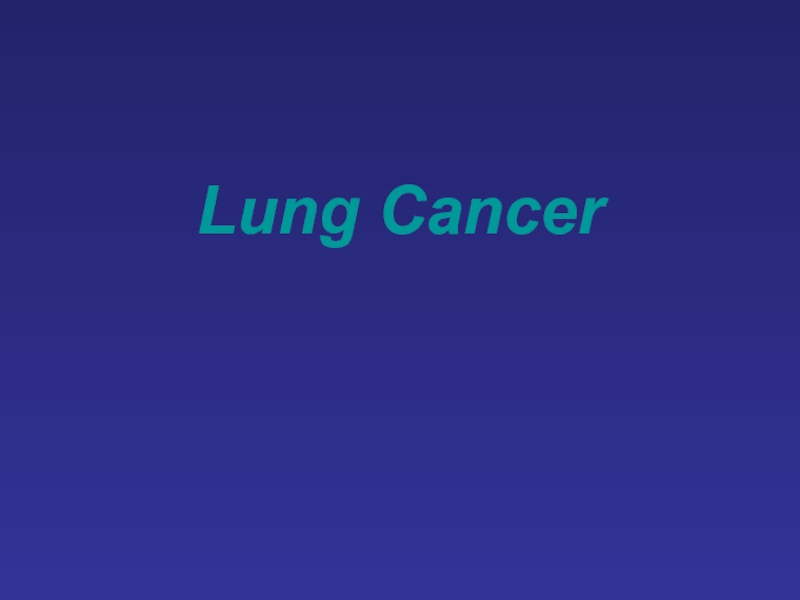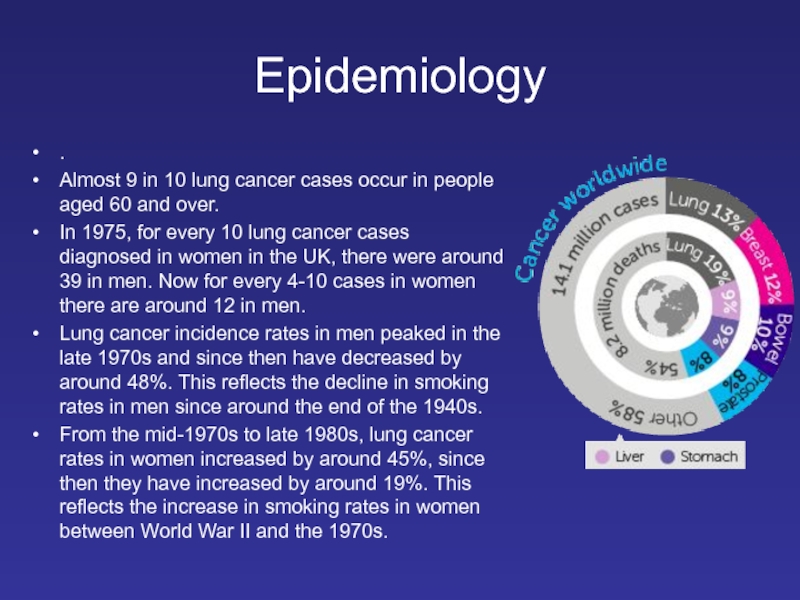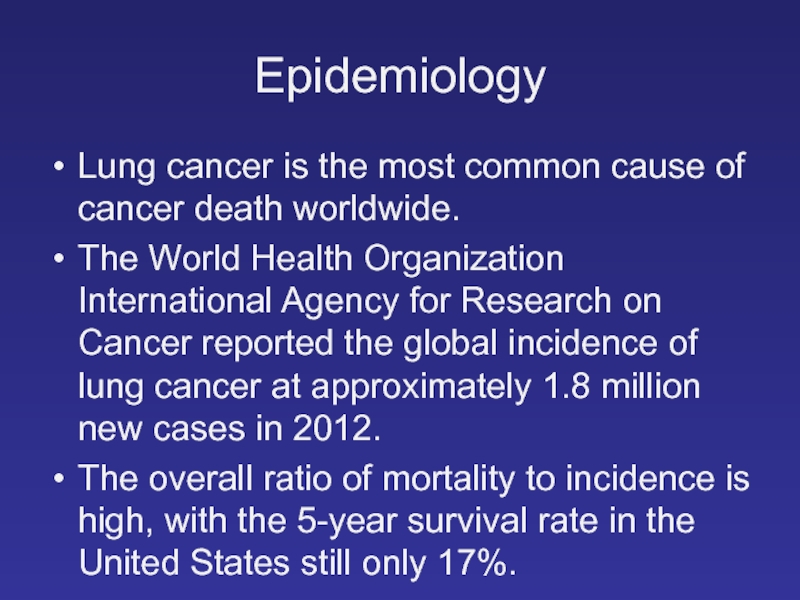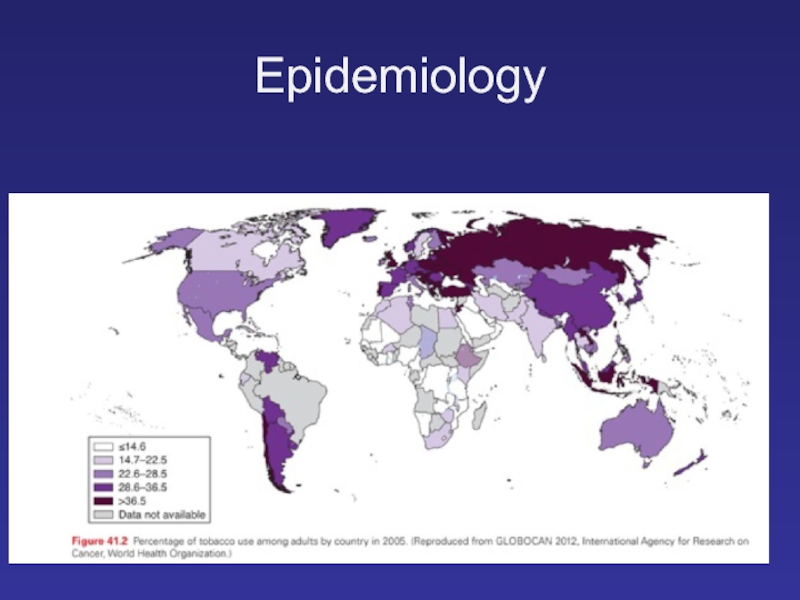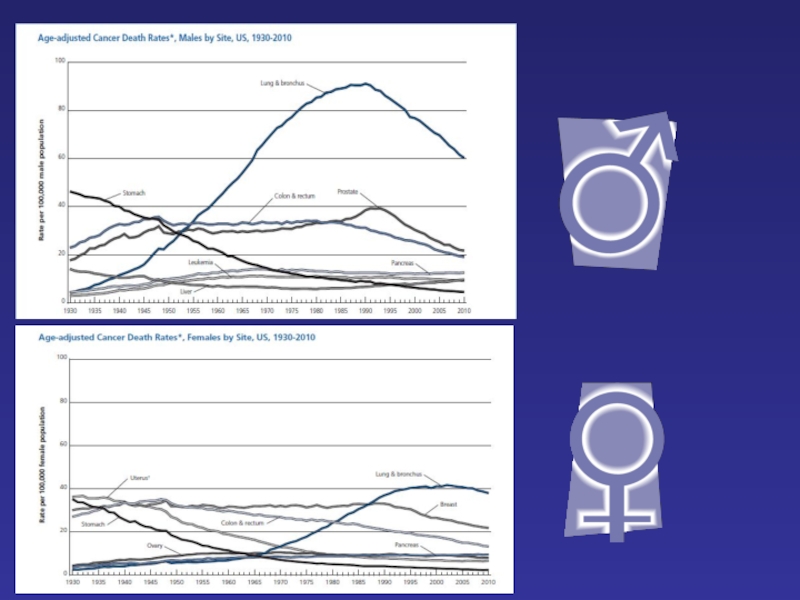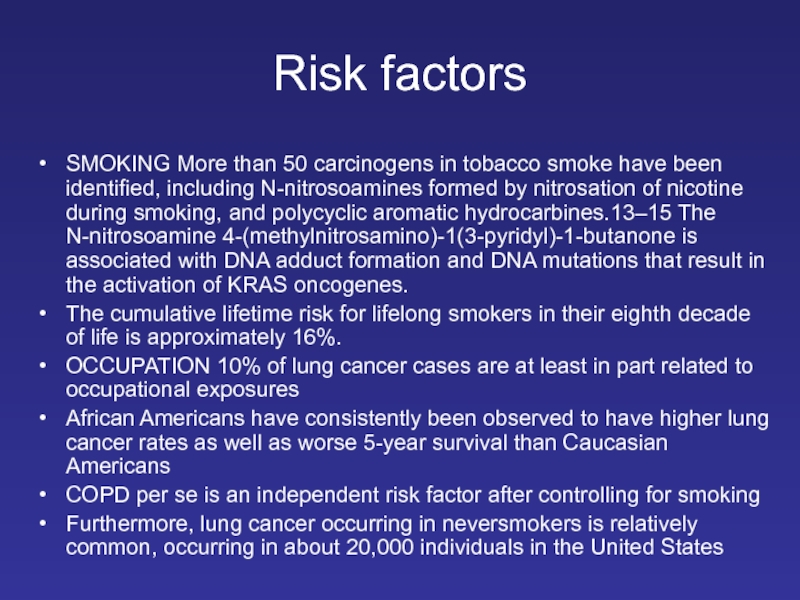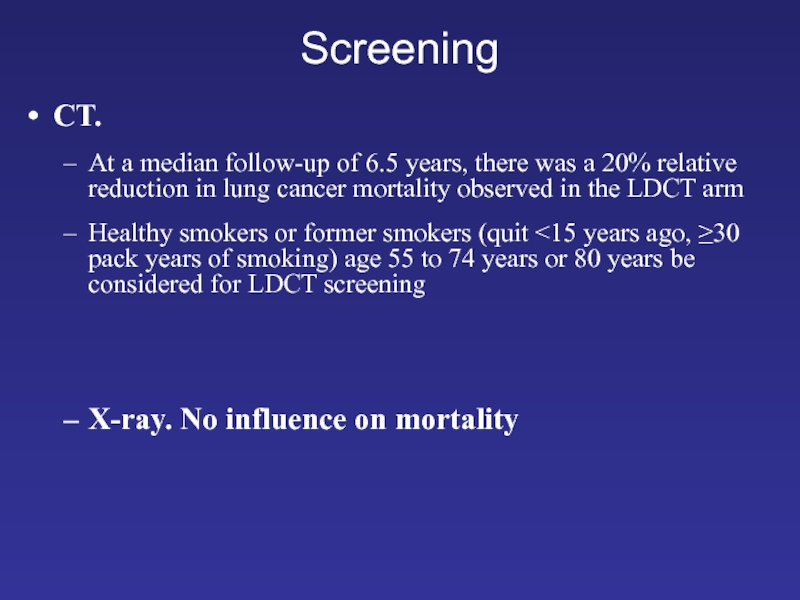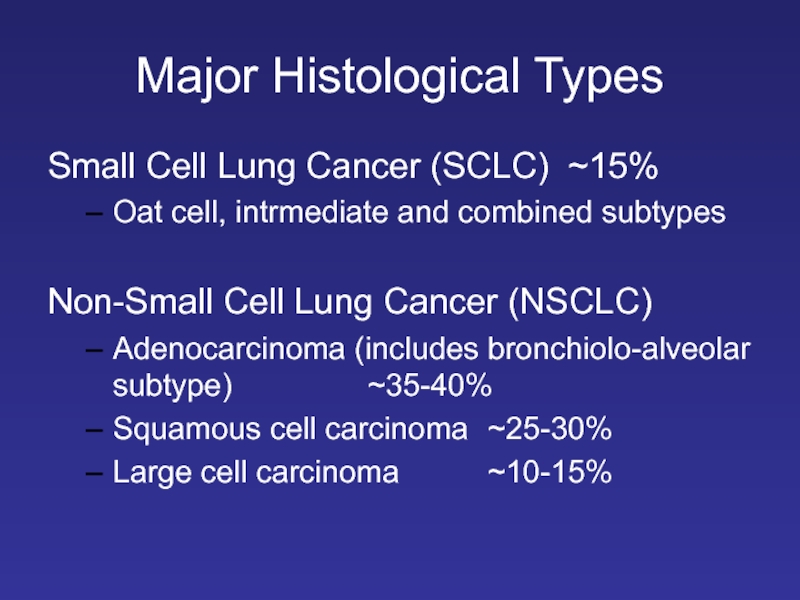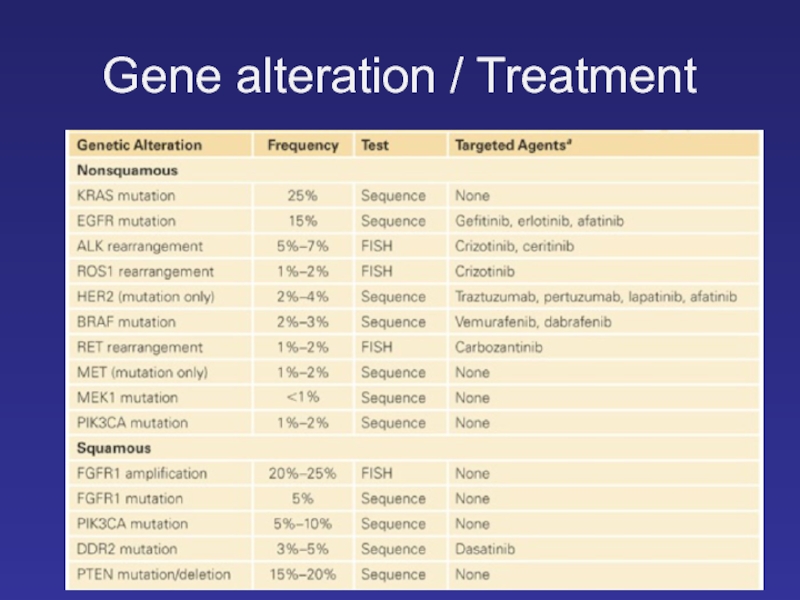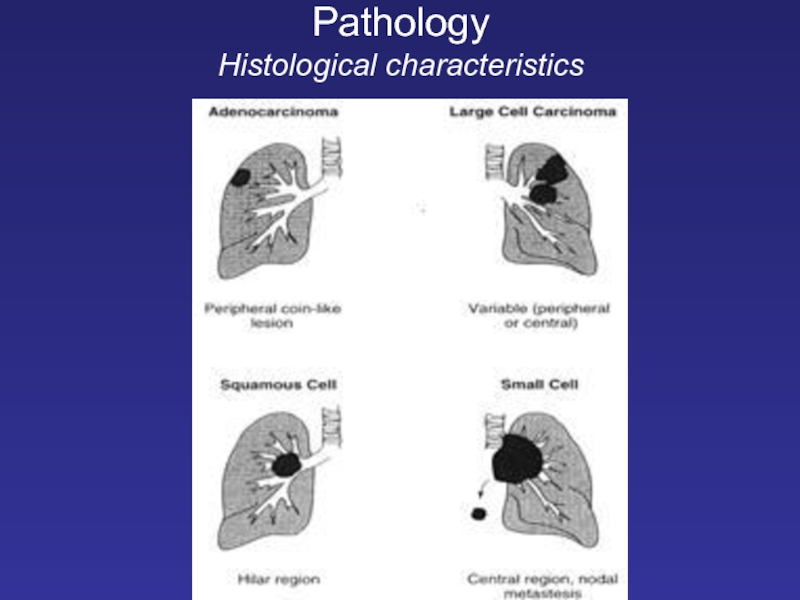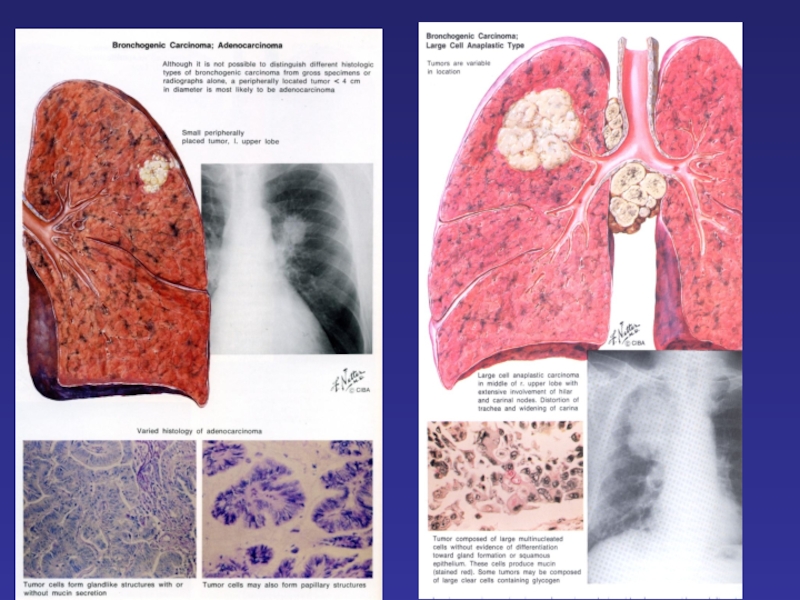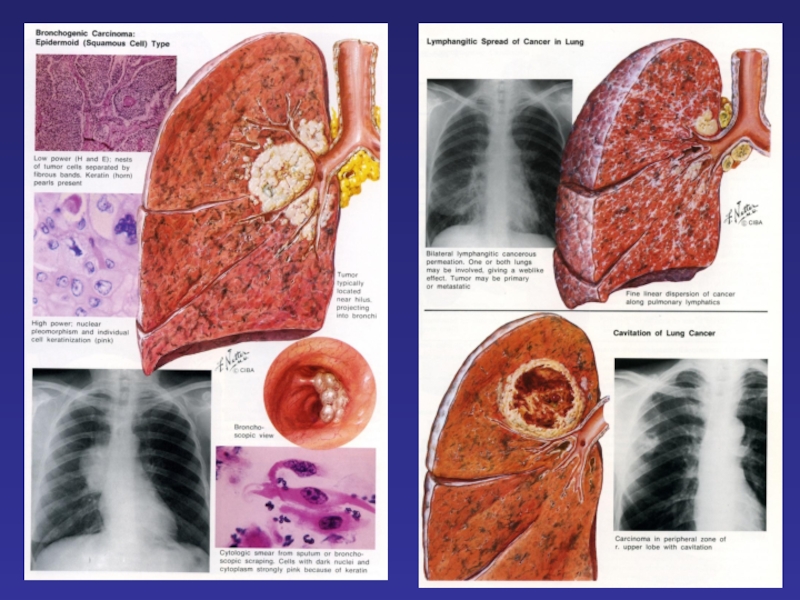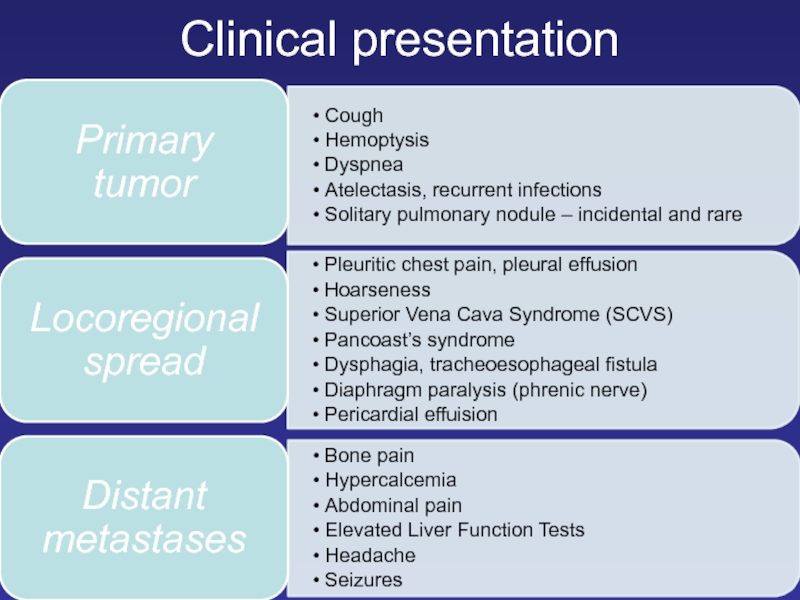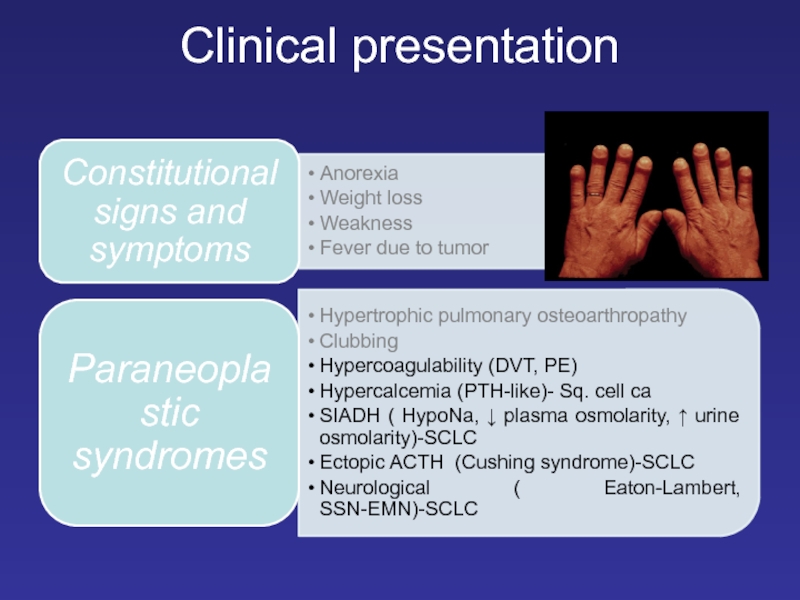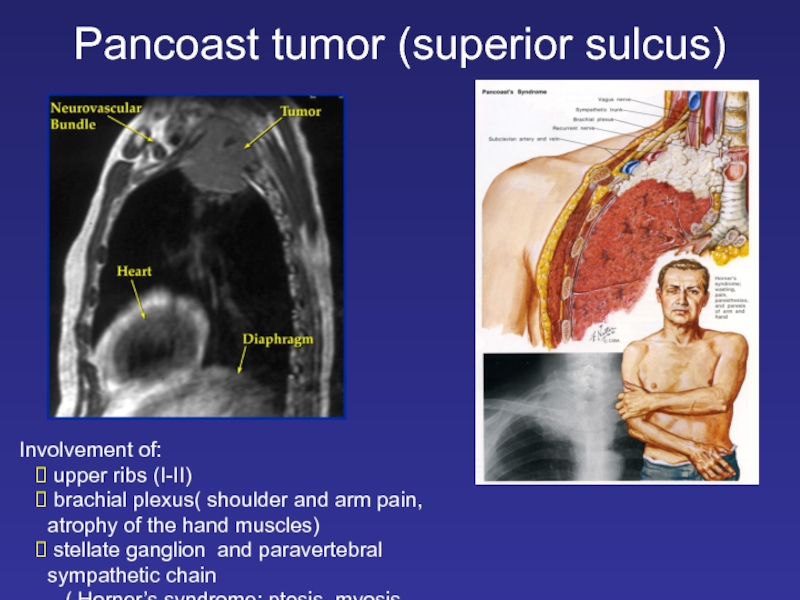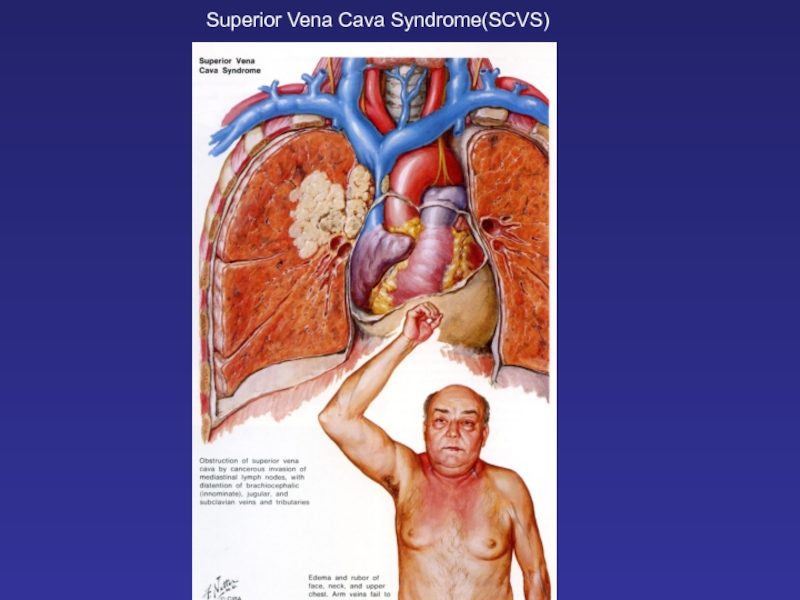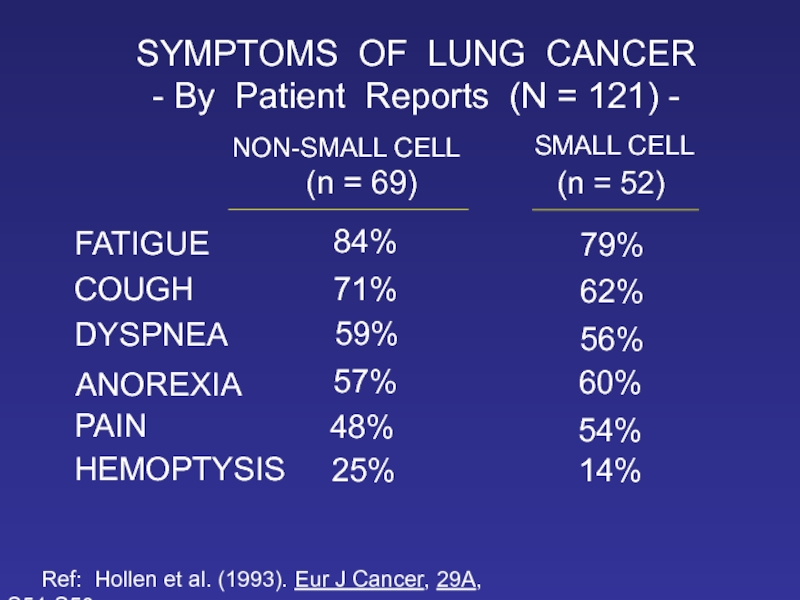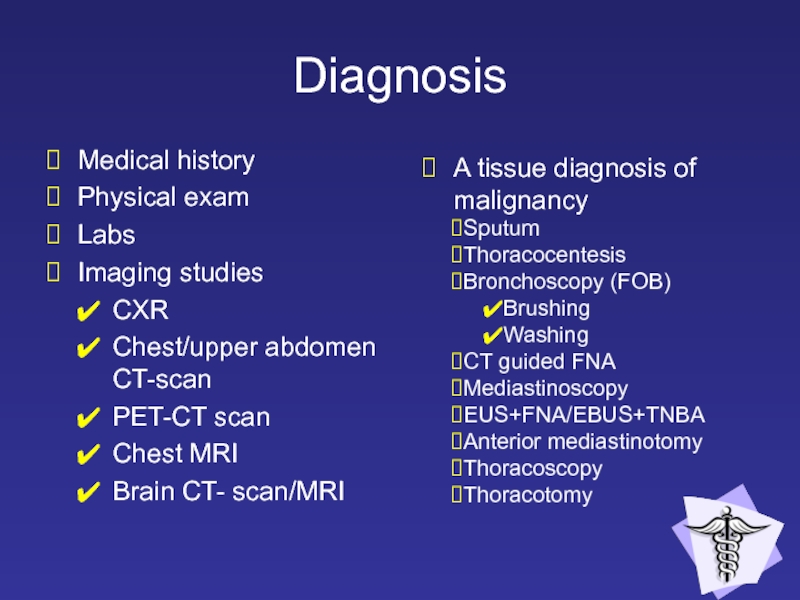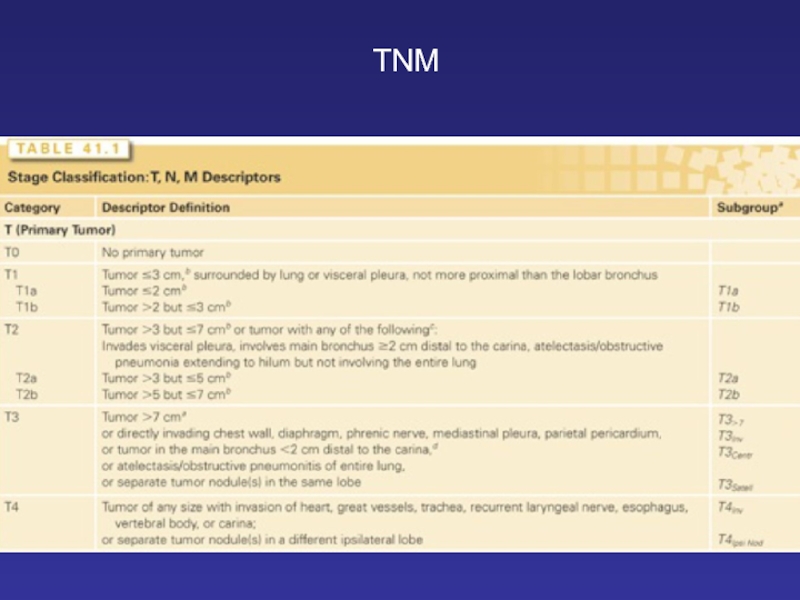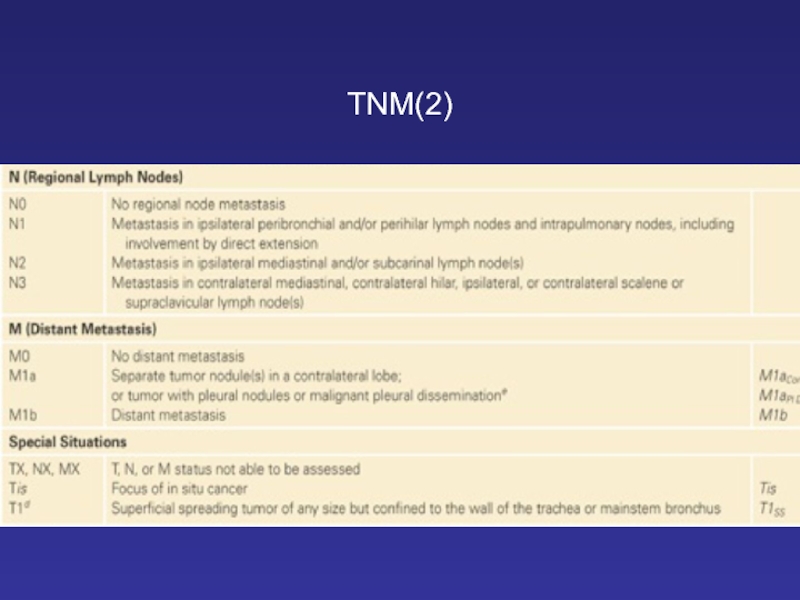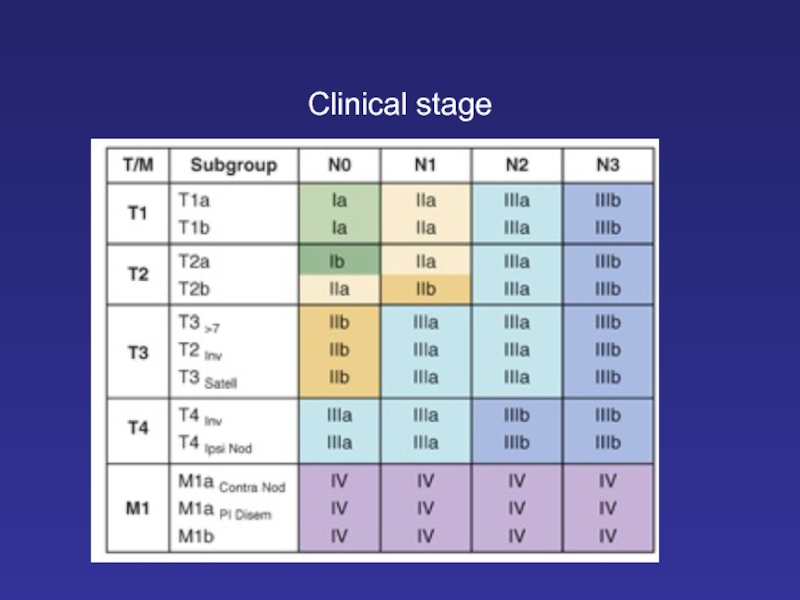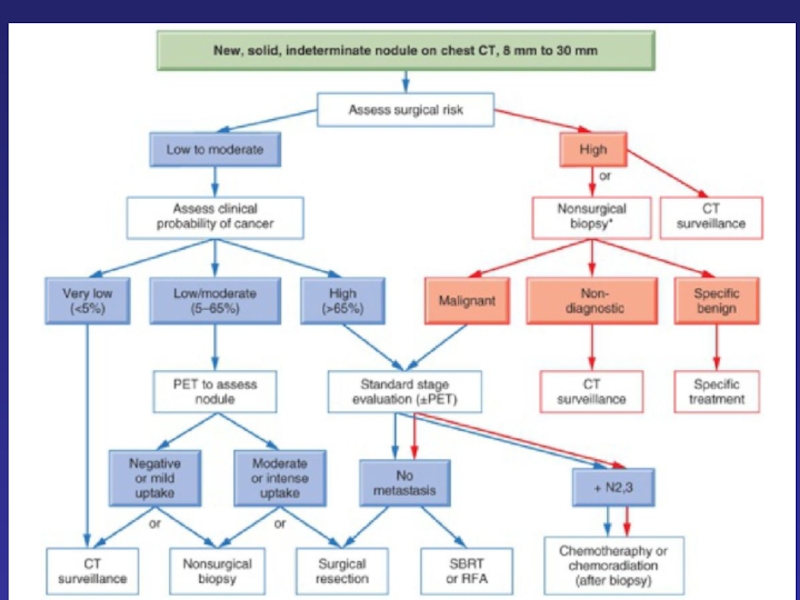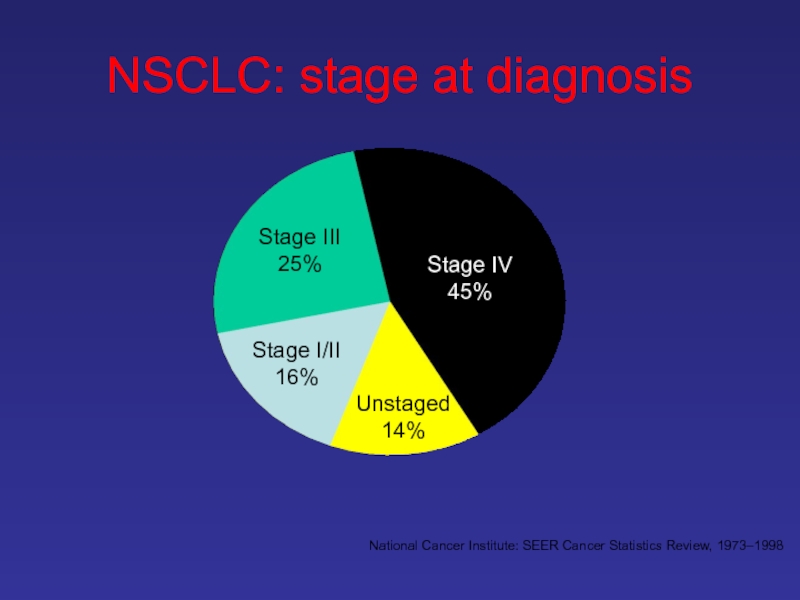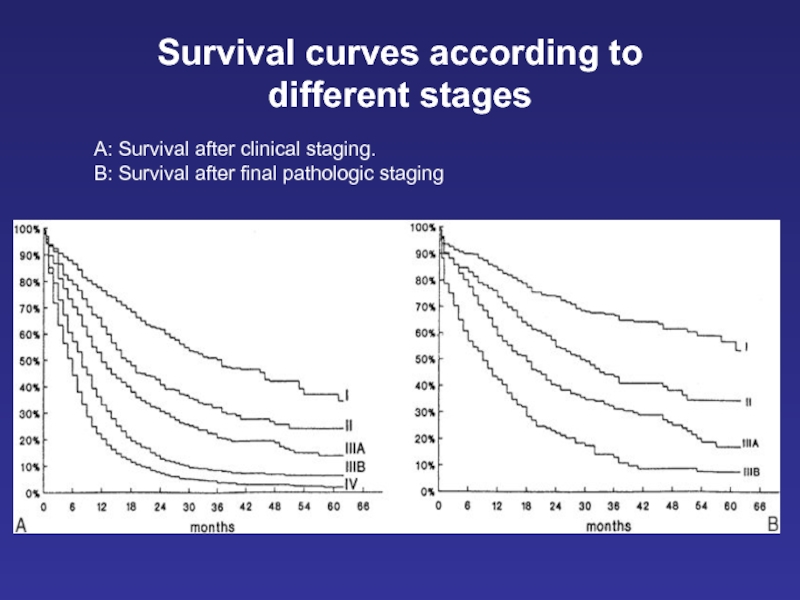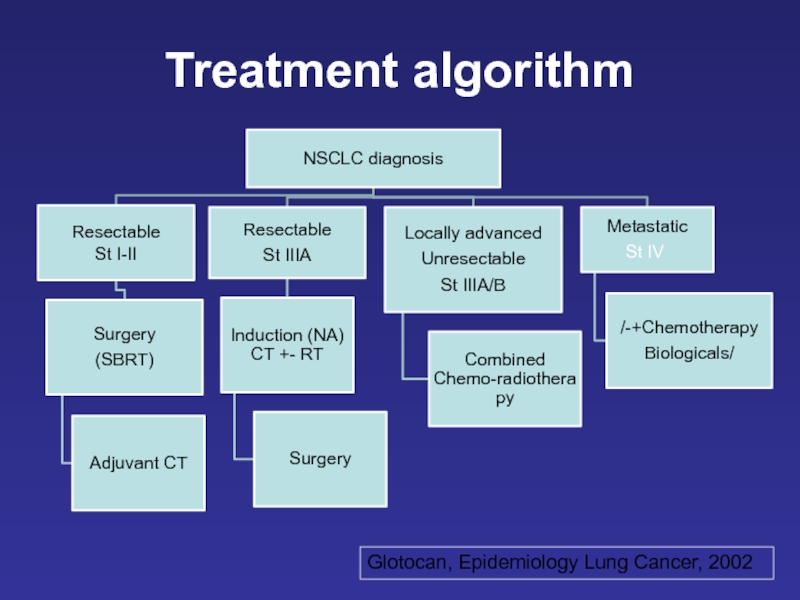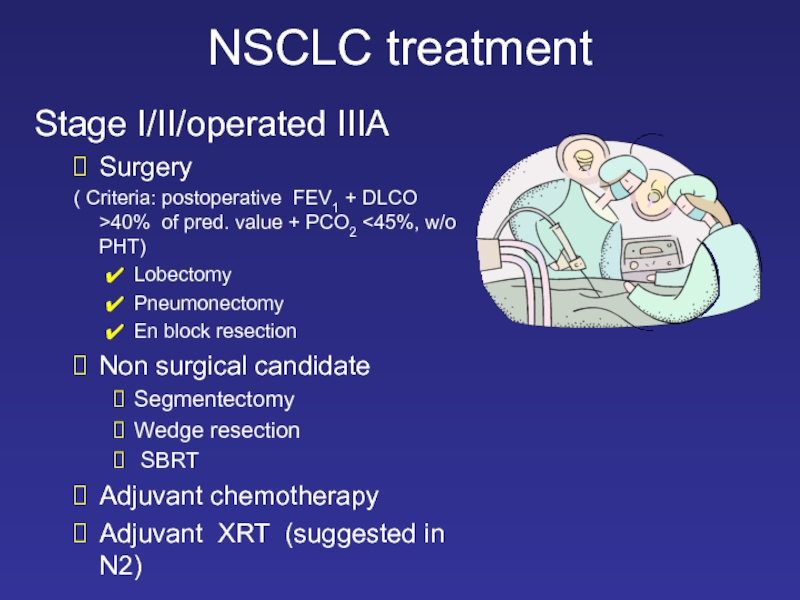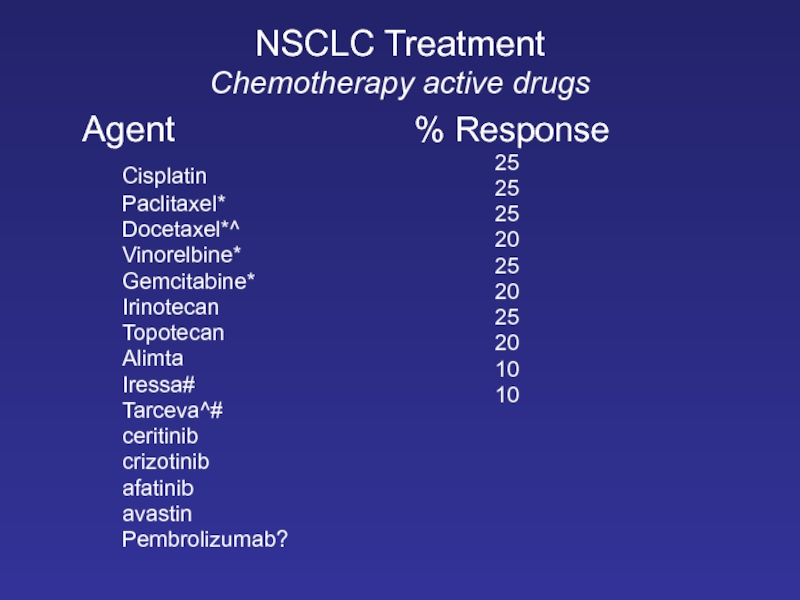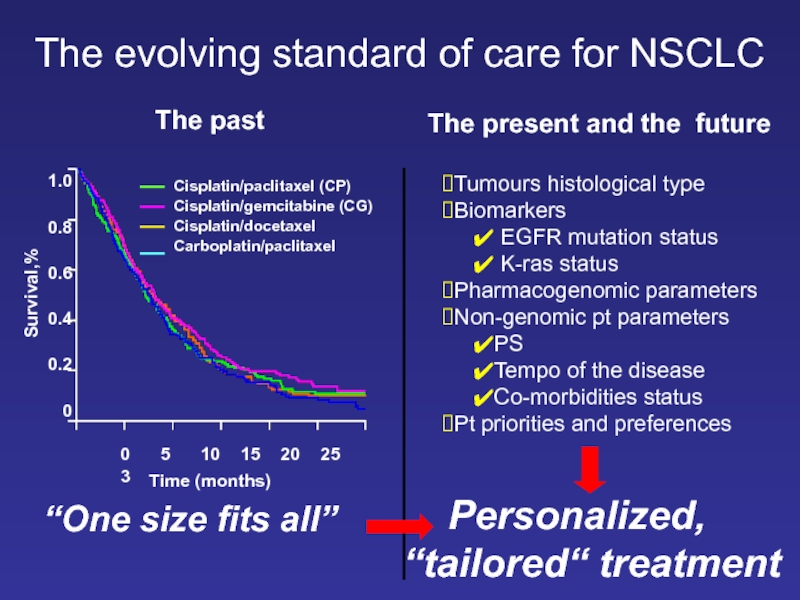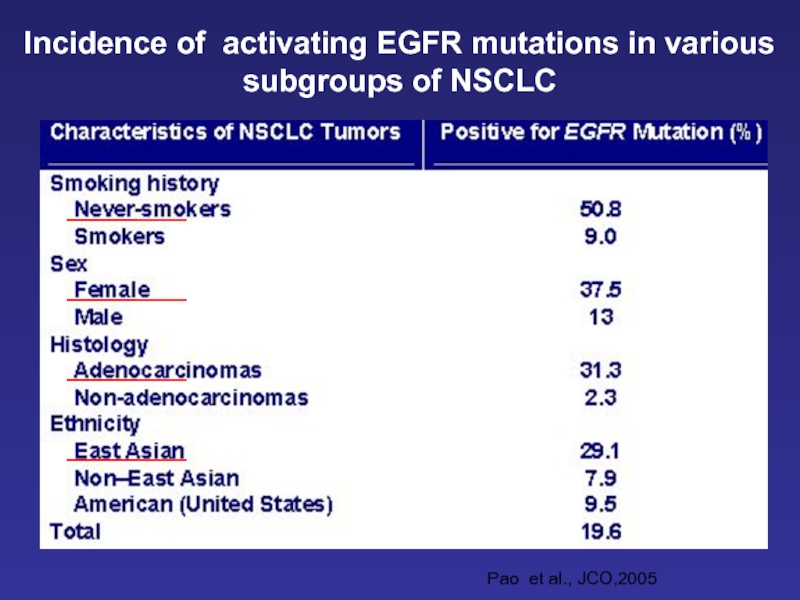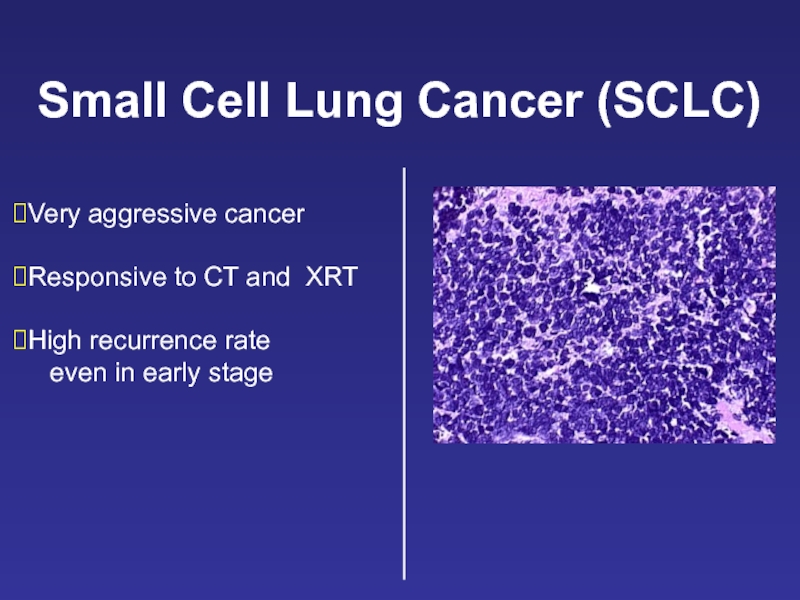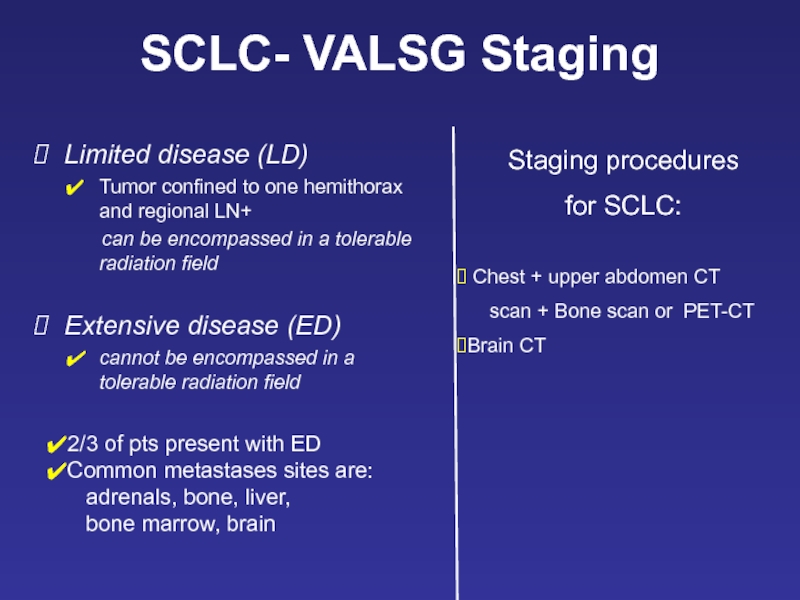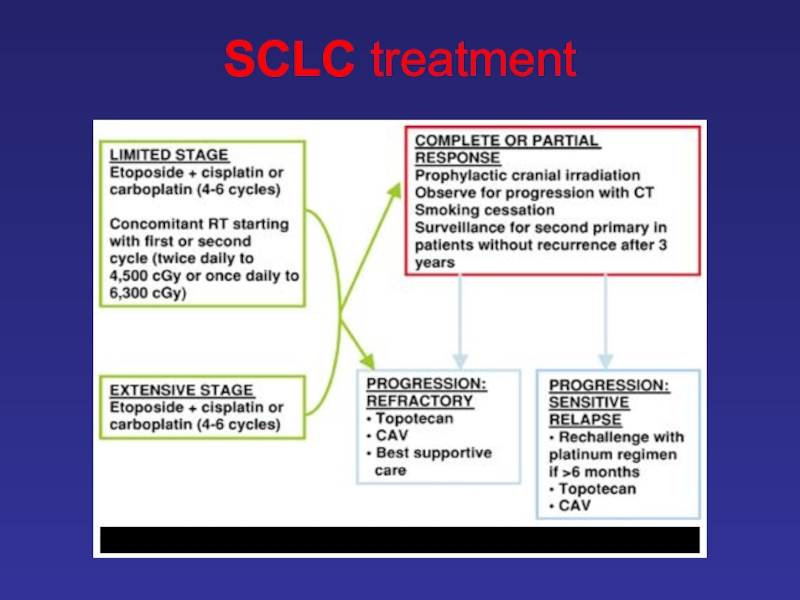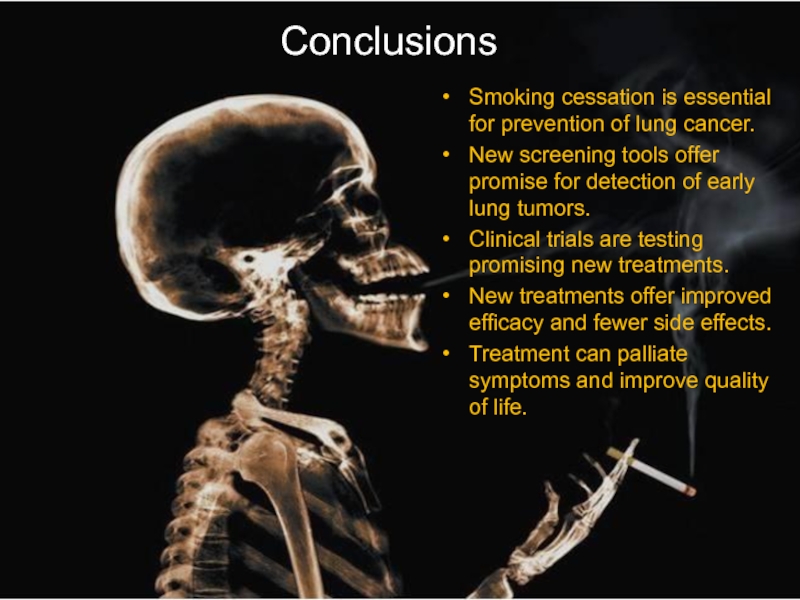- Главная
- Разное
- Дизайн
- Бизнес и предпринимательство
- Аналитика
- Образование
- Развлечения
- Красота и здоровье
- Финансы
- Государство
- Путешествия
- Спорт
- Недвижимость
- Армия
- Графика
- Культурология
- Еда и кулинария
- Лингвистика
- Английский язык
- Астрономия
- Алгебра
- Биология
- География
- Детские презентации
- Информатика
- История
- Литература
- Маркетинг
- Математика
- Медицина
- Менеджмент
- Музыка
- МХК
- Немецкий язык
- ОБЖ
- Обществознание
- Окружающий мир
- Педагогика
- Русский язык
- Технология
- Физика
- Философия
- Химия
- Шаблоны, картинки для презентаций
- Экология
- Экономика
- Юриспруденция
Lung Cancer презентация
Содержание
- 1. Lung Cancer
- 2. Epidemiology . Almost 9 in 10 lung
- 3. Epidemiology Lung cancer is the most common
- 4. Epidemiology
- 6. Risk factors SMOKING More than 50 carcinogens
- 7. Screening CT. At a median
- 8. Major Histological Types Small Cell Lung Cancer
- 9. Gene alteration / Treatment
- 10. Pathology Histological characteristics
- 13. Clinical presentation
- 14. Clinical presentation
- 15. Pancoast tumor (superior sulcus) Involvement of:
- 16. Superior Vena Cava Syndrome(SCVS)
- 17. SYMPTOMS OF LUNG CANCER - By Patient
- 18. Diagnosis Medical history Physical exam Labs Imaging
- 19. TNM
- 20. TNM(2)
- 21. Clinical stage
- 23. NSCLC: stage at diagnosis National Cancer Institute:
- 24. Survival curves according to different stages
- 25. Glotocan, Epidemiology Lung Cancer, 2002 Treatment algorithm
- 26. NSCLC treatment Stage I/II/operated IIIA
- 27. NSCLC Treatment Chemotherapy active drugs Agent Cisplatin
- 28. The evolving standard of care for NSCLC
- 29. Incidence of activating EGFR mutations in various
- 30. Small Cell Lung Cancer (SCLC) Very aggressive
- 31. Limited disease (LD) Tumor confined to
- 32. SCLC treatment
- 33. Conclusions Smoking cessation is essential for
Слайд 2Epidemiology
.
Almost 9 in 10 lung cancer cases occur in people aged
In 1975, for every 10 lung cancer cases diagnosed in women in the UK, there were around 39 in men. Now for every 4-10 cases in women there are around 12 in men.
Lung cancer incidence rates in men peaked in the late 1970s and since then have decreased by around 48%. This reflects the decline in smoking rates in men since around the end of the 1940s.
From the mid-1970s to late 1980s, lung cancer rates in women increased by around 45%, since then they have increased by around 19%. This reflects the increase in smoking rates in women between World War II and the 1970s.
Слайд 3Epidemiology
Lung cancer is the most common cause of cancer death worldwide.
The World Health Organization International Agency for Research on Cancer reported the global incidence of lung cancer at approximately 1.8 million new cases in 2012.
The overall ratio of mortality to incidence is high, with the 5-year survival rate in the United States still only 17%.
Слайд 6Risk factors
SMOKING More than 50 carcinogens in tobacco smoke have been
The cumulative lifetime risk for lifelong smokers in their eighth decade of life is approximately 16%.
OCCUPATION 10% of lung cancer cases are at least in part related to occupational exposures
African Americans have consistently been observed to have higher lung cancer rates as well as worse 5-year survival than Caucasian Americans
COPD per se is an independent risk factor after controlling for smoking
Furthermore, lung cancer occurring in neversmokers is relatively common, occurring in about 20,000 individuals in the United States
Слайд 7Screening
CT.
At a median follow-up of 6.5 years, there was a
Healthy smokers or former smokers (quit <15 years ago, ≥30 pack years of smoking) age 55 to 74 years or 80 years be considered for LDCT screening
X-ray. No influence on mortality
Слайд 8Major Histological Types
Small Cell Lung Cancer (SCLC) ~15%
Oat cell, intrmediate and
Non-Small Cell Lung Cancer (NSCLC)
Adenocarcinoma (includes bronchiolo-alveolar subtype) ~35-40%
Squamous cell carcinoma ~25-30%
Large cell carcinoma ~10-15%
Слайд 15Pancoast tumor (superior sulcus)
Involvement of:
upper ribs (I-II)
brachial plexus(
stellate ganglion and paravertebral sympathetic chain
( Horner’s syndrome: ptosis, myosis, anhidrosis)
Слайд 17SYMPTOMS OF LUNG CANCER
- By Patient Reports (N = 121) -
84%
79%
71%
62%
59%
56%
57%
60%
48%
25%
14%
54%
(n = 69)
(n = 52)
NON-SMALL CELL
SMALL CELL
FATIGUE
COUGH
DYSPNEA
ANOREXIA
PAIN
HEMOPTYSIS
Слайд 18Diagnosis
Medical history
Physical exam
Labs
Imaging studies
CXR
Chest/upper abdomen CT-scan
PET-CT scan
Chest MRI
Brain CT- scan/MRI
A
Sputum
Thoracocentesis
Bronchoscopy (FOB)
Brushing
Washing
CT guided FNA
Mediastinoscopy
EUS+FNA/EBUS+TNBA
Anterior mediastinotomy
Thoracoscopy
Thoracotomy
Слайд 23NSCLC: stage at diagnosis
National Cancer Institute: SEER Cancer Statistics Review, 1973–1998
Stage
Unstaged
14%
Stage III
25%
Stage I/II
16%
Слайд 24Survival curves according to different stages
A: Survival after clinical staging.
B:
Слайд 26NSCLC treatment
Stage I/II/operated IIIA
Surgery
( Criteria: postoperative FEV1 + DLCO
Lobectomy
Pneumonectomy
En block resection
Non surgical candidate
Segmentectomy
Wedge resection
SBRT
Adjuvant chemotherapy
Adjuvant XRT (suggested in N2)
Слайд 27NSCLC Treatment
Chemotherapy active drugs
Agent
Cisplatin
Paclitaxel*
Docetaxel*^
Vinorelbine*
Gemcitabine*
Irinotecan
Topotecan
Alimta
Iressa#
Tarceva^#
ceritinib
crizotinib
afatinib
avastin
Pembrolizumab?
% Response
25
25
25
20
25
20
25
20
10
10
Слайд 28The evolving standard of care for NSCLC
“One size fits all”
1.0
0.8
0.6
0.4
0.2
0
Time (months)
Cisplatin/paclitaxel
Cisplatin/gemcitabine (CG)
Cisplatin/docetaxel
Carboplatin/paclitaxel
Survival,%
0 5 10 15 20 25 3
The past
The present and the future
Personalized, “tailored“ treatment
Tumours histological type
Biomarkers
EGFR mutation status
K-ras status
Pharmacogenomic parameters
Non-genomic pt parameters
PS
Tempo of the disease
Co-morbidities status
Pt priorities and preferences
Слайд 30Small Cell Lung Cancer (SCLC)
Very aggressive cancer
Responsive to CT and XRT
High
even in early stage
Слайд 31
Limited disease (LD)
Tumor confined to one hemithorax and regional LN+
Extensive disease (ED)
cannot be encompassed in a tolerable radiation field
SCLC- VALSG Staging
Staging procedures
for SCLC:
Chest + upper abdomen CT
scan + Bone scan or PET-CT
Brain CT
2/3 of pts present with ED
Common metastases sites are:
adrenals, bone, liver,
bone marrow, brain
Слайд 33Conclusions
Smoking cessation is essential for prevention of lung cancer.
New screening
Clinical trials are testing promising new treatments.
New treatments offer improved efficacy and fewer side effects.
Treatment can palliate symptoms and improve quality of life.
